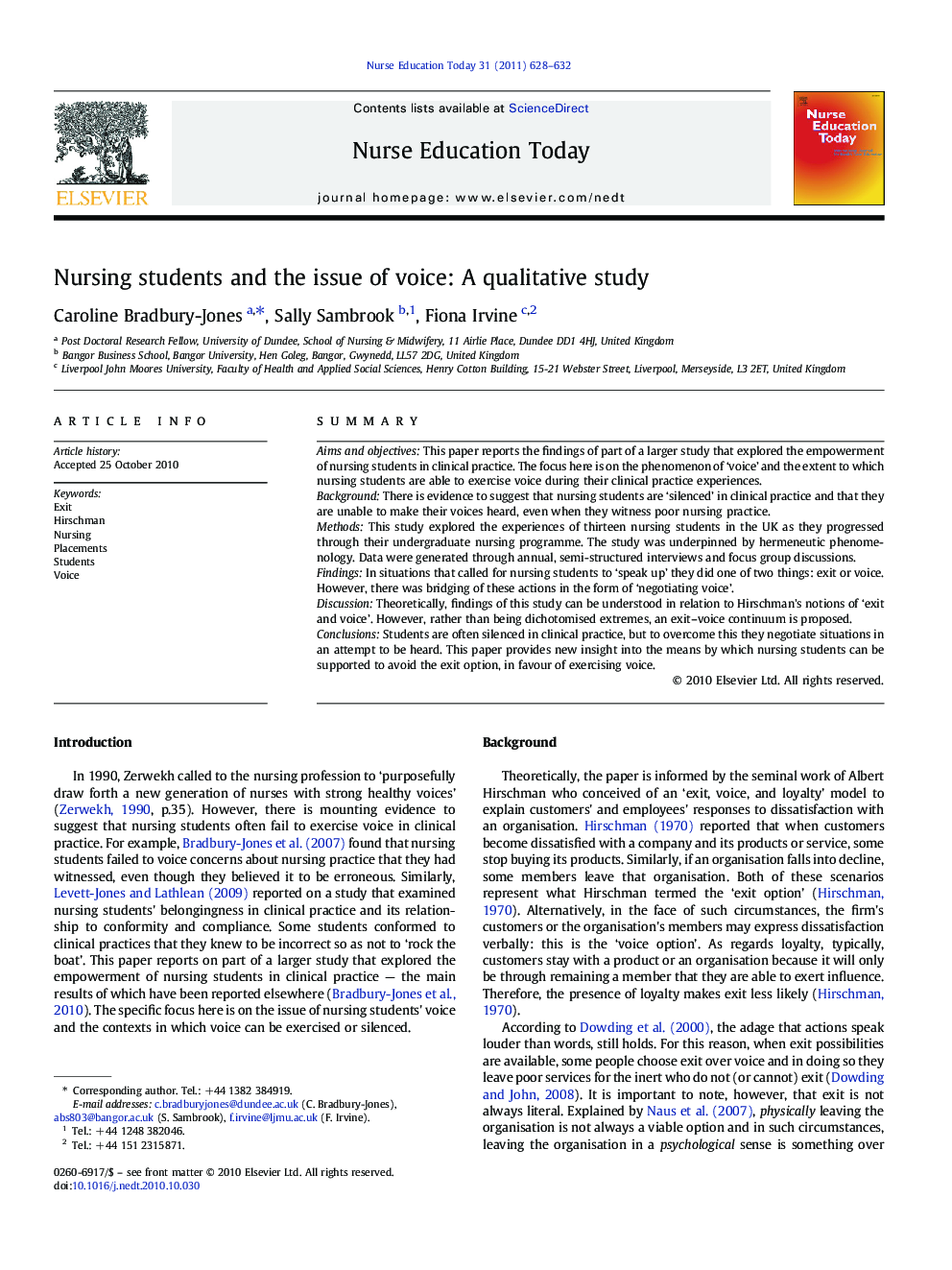| Article ID | Journal | Published Year | Pages | File Type |
|---|---|---|---|---|
| 368970 | Nurse Education Today | 2011 | 5 Pages |
SummaryAims and objectivesThis paper reports the findings of part of a larger study that explored the empowerment of nursing students in clinical practice. The focus here is on the phenomenon of ‘voice’ and the extent to which nursing students are able to exercise voice during their clinical practice experiences.BackgroundThere is evidence to suggest that nursing students are ‘silenced’ in clinical practice and that they are unable to make their voices heard, even when they witness poor nursing practice.MethodsThis study explored the experiences of thirteen nursing students in the UK as they progressed through their undergraduate nursing programme. The study was underpinned by hermeneutic phenomenology. Data were generated through annual, semi-structured interviews and focus group discussions.FindingsIn situations that called for nursing students to ‘speak up’ they did one of two things: exit or voice. However, there was bridging of these actions in the form of ‘negotiating voice’.DiscussionTheoretically, findings of this study can be understood in relation to Hirschman's notions of ‘exit and voice’. However, rather than being dichotomised extremes, an exit–voice continuum is proposed.ConclusionsStudents are often silenced in clinical practice, but to overcome this they negotiate situations in an attempt to be heard. This paper provides new insight into the means by which nursing students can be supported to avoid the exit option, in favour of exercising voice.
